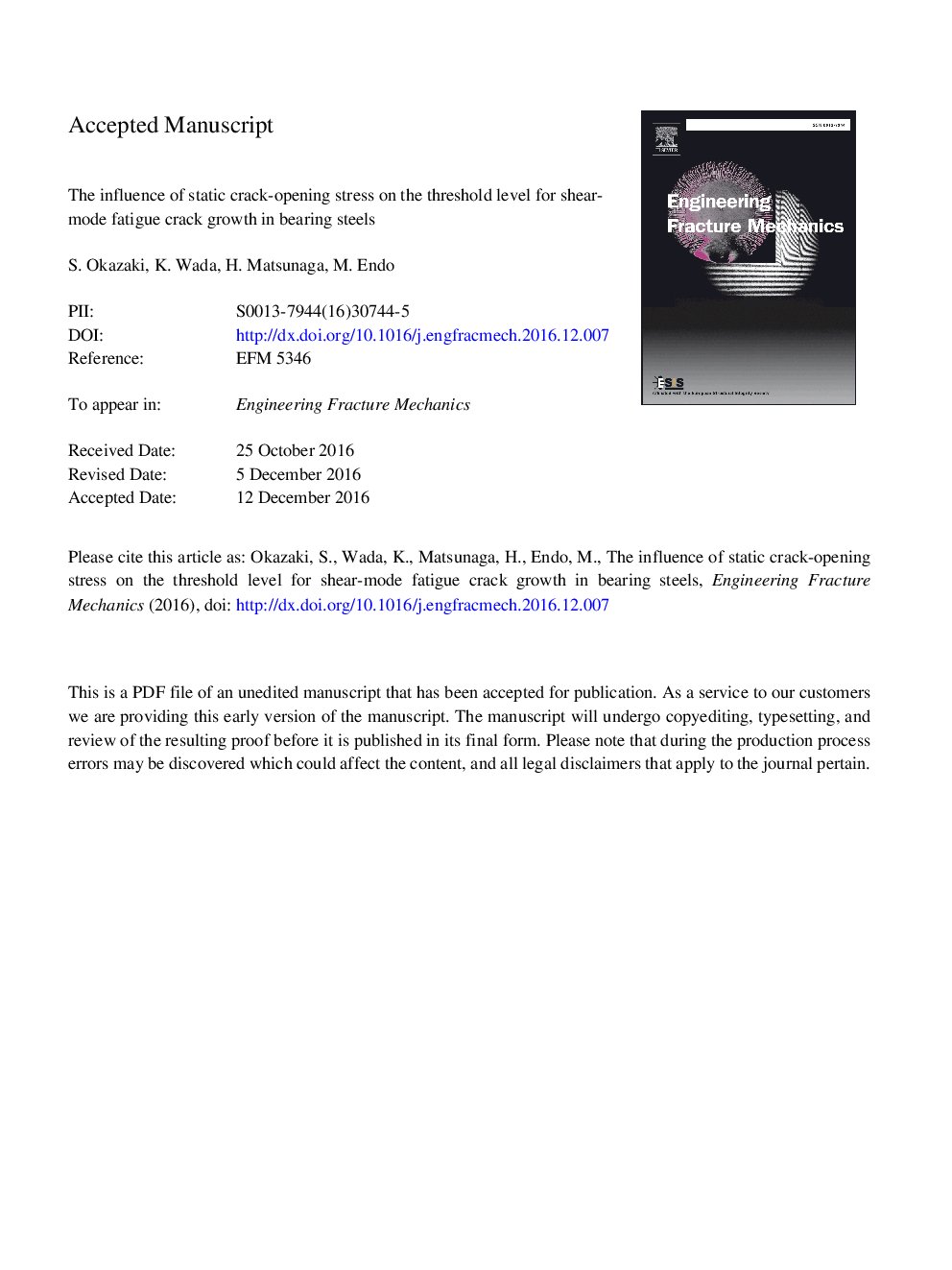| Article ID | Journal | Published Year | Pages | File Type |
|---|---|---|---|---|
| 5014065 | Engineering Fracture Mechanics | 2017 | 28 Pages |
Abstract
An investigation was conducted into the influence of statically-applied, mode I, crack-opening load on the threshold condition for propagation of a shear-mode fatigue crack in a bearing steel. Torsional fatigue test was carried out at an R of â1 using a hollow cylindrical specimen into which a semi-elliptical, small slit was axially introduced. A static axial compressive stress was simultaneously applied to suppress crack branching. A coplanar, shear-mode, non-propagating fatigue crack emanating from the slit was attained by appropriate control of shear stress amplitude. Internal pressure was then applied to generate a hoop stress as a static crack-opening stress, Ïθ static. Consequently, the threshold shear-mode stress intensity factor range, ÎKÏth, was significantly decreased with increase of the static mode I stress intensity factor. To further understand the contribution of Ïθ static to the reduction in ÎKÏth, microstructural observations for the cross-sections of a non-propagating crack were conducted using a scanning electron microscope in conjunction with the electron backscatter diffraction analysis. The results revealed that the excess loading of Ïθ static accounts for the change in the crack-path, resulting in a further reduction in ÎKÏth.
Related Topics
Physical Sciences and Engineering
Engineering
Mechanical Engineering
Authors
S. Okazaki, K. Wada, H. Matsunaga, M. Endo,
